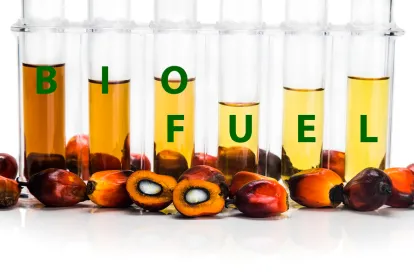EPA Issues Review Plan For CBI Claims Under TSCA
On February 19, 2020, the U.S. Environmental Protection Agency (EPA) released its review plan for certain confidential business information (CBI) claims under the Toxic Substances Control Act (TSCA). Aiming to provide clarity for affected stakeholders and efficiently fulfill CBI requirements under TSCA, EPA will review CBI claims made for chemical substance identity for chemicals on the “active” portion of the TSCA Inventory. The final rule is a follow-on to the 2017 TSCA Inventory Notification (Active-Inactive) Rule, amending certain substantiation provisions in response to a federal court decision. Chemical manufacturers and/or processors who have made CBI claims for specific chemical identities listed as “active” substances must follow the final process released by EPA. The final review plan describes the procedures and deadlines for substantiating CBI claims, including provisions for supplementing certain previously filed substantiations. It is important to note that manufacturers that amend, update, or file new CBI substantiations consistent with the new requirements must do so electronically via EPA’s Central Data Exchange (CDX) system.
EPA Pollution Prevention Program Requests Applications
The EPA Pollution Prevention (P2) Grant Program has announced the availability of funds to provide technical assistance (e.g., information, training, tools) to businesses to encourage the development and implementation of source reduction practices. EPA states that source reduction practices can help businesses save money by reducing resource use, expenditures, waste, and liability costs, while at the same time reducing their environmental footprint and helping to protect human health and the environment. Applications for fiscal years (FY) 2020 and 2021 are due March 31, 2020.
EPA states that it anticipates awarding approximately $9.38 million in total federal pollution prevention grant funding over a two-year funding cycle ($4.69 million in FY 2020 funds and approximately $4.69 million in FY 2021 funds). According to EPA, P2 grants are expected to be awarded in each EPA region and will be funded in the form of grants or cooperative agreements. EPA provides the following “quick facts” for P2 grants:
-
Eligibility: State governments, colleges, and universities (recognized as instrumentalities of the state), federally recognized tribes, and intertribal consortia;
-
Match requirement: 50 percent match; for tribal governments that place P2 grant activities into a performance partnership grant (PPG) agreement, the match for the tribe is reduced to five percent;
-
Review of applications: Along with other requirements that are noted in the Request for Applications (RFA), applications must address one of the following statutory/regulatory criteria to merit further review:
-
Provide technical assistance and/or training to businesses and/or facilities about source reduction techniques to help them adopt and implement source reduction approaches and to increase the development, adoption, and market penetration of greener products and sustainable manufacturing practices; and
-
Identify, develop, document, and share P2 best management practices and innovations so this information may inform future technical assistance and these P2 approaches and outcomes may be replicated by others;
-
-
Range of awards: Individual grant awards may potentially be in the range of $40,000 - $500,000 for the two-year funding period (between $20,000 and $250,000 incrementally funded per year). Some EPA regions may have lower award caps, however; and
-
Average number of grants issued: 40.
UMass Amherst Unveils A Renewable Device Capable Of Generating Energy
On February 17, 2020, researchers from the University of Massachusetts Amherst (UMass Amherst) announced that one of its laboratories has developed a device using a natural protein to create electricity from moisture in the air. Electrical engineer Jun Yao and microbiologist Derek Lovley have created what they call “Air-Gen,” which consists of an air-powered generator with electrically conductive protein nanowires produced by the microbe Geobacter. The Air-gen connects electrodes to the protein nanowires in such a way that electrical current is generated from the water vapor naturally present in the atmosphere. According to Yao, the device generates clean energy 24/7. What Yao and Lovley describe as a low cost, non-polluting, and renewable device, can generate energy even in areas with extremely low humidity, such as the Sahara Desert. Although the current generation of Air-gen devices are only able to power small electronics, both scientists state that the ultimate goal is to develop large-scale systems that will highly contribute to sustainable energy production.



 />i
/>i

